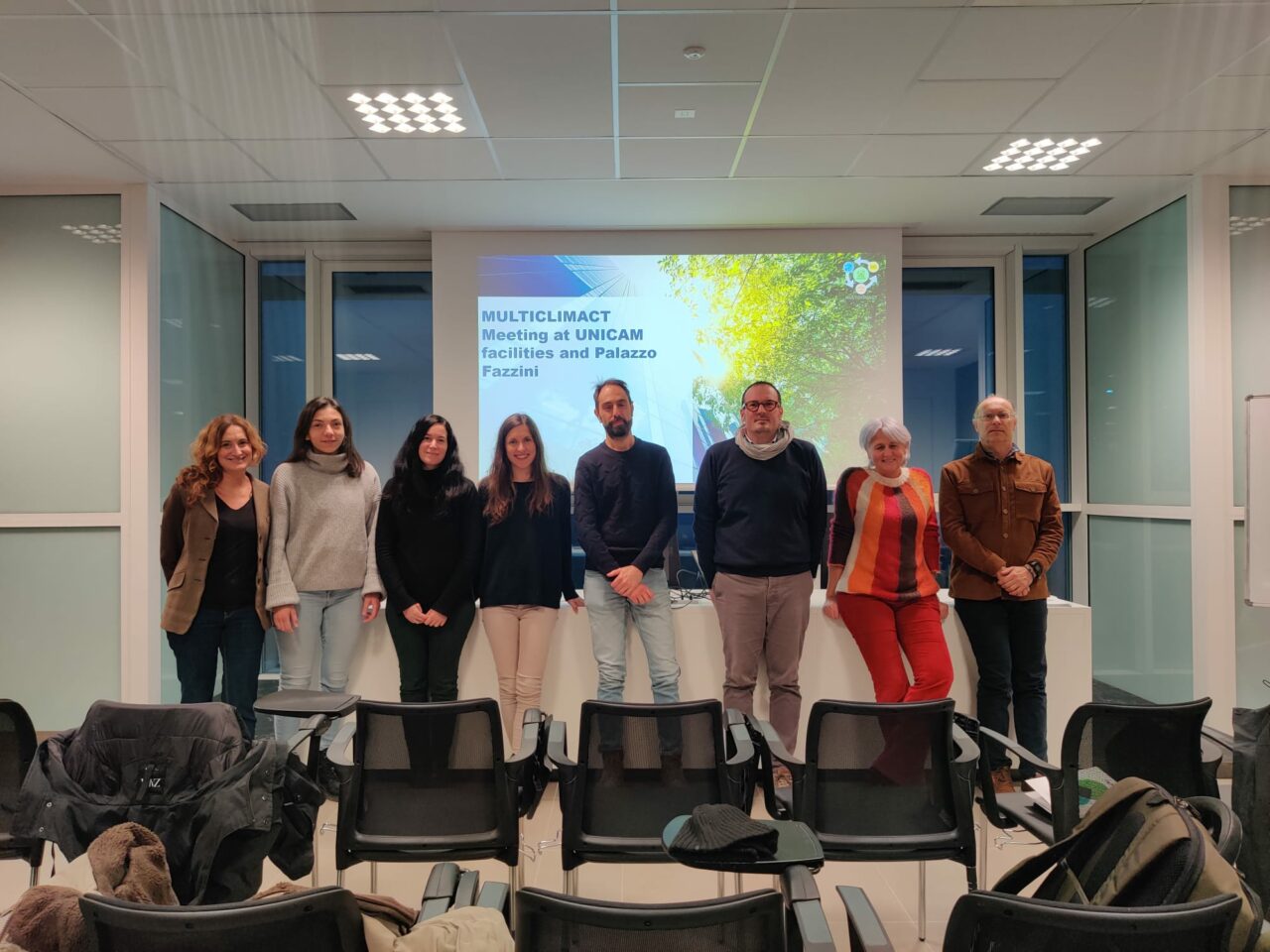Materials and Sensing Technologies for Building Resilience Planned at MULTICLIMACT Meeting
10. Januar 2024 | News

MULTICLIMACT partners focusing on innovative materials and sensing solutions. Vibrant discussions and site visits underscored their commitment to advancing sustainable technologies.
CAMERINO, Italy. 10 January 2024 – A collaborative effort to advance structural health monitoring technologies took place at the University of Camerino (UNICAM) facilities as part of the MULTICLIMACT project. Representatives from UNICAM, Marche Polytechnic University (UNIVPM), and Italian National Agency for New Technologies, Energy and Sustainable Economic Development (ENEA) convened to strategize and plan joint activities for the Italian pilot located at Palazzo Fazzini.
Key highlights from the meeting include UNIVPM’s presentation of innovative self-sensing materials and corresponding sensors aimed at enhancing building performance. Additionally, they introduced a multifunctional mortar designed to improve indoor air quality, showcasing the project’s commitment to sustainable solutions.
UNICAM contributed insights into vibrational testing procedures to be conducted in partnership with UNIVPM, along with presenting structural and architectural plans of Palazzo Fazzini. These visuals will aid in optimizing future activities within the pilot project.
ENEA brought forward experimental non-destructive technologies such as sound, ultrasound, and tomographic approaches for in-field inspections, demonstrating the project’s dedication to cutting-edge research methodologies.
Furthermore, participants had the opportunity to visit the laboratories of MARLIC (Marche Applied Research Laboratory for Innovative Composites), of which both UNIVPM and UNICAM are partners; these facilities represent a valuable support for performing tests within the MULTICLIMACT project. They also toured Palazzo Fazzini, gaining valuable insights into the practical implementation of their collaborative efforts.
The meeting underscored the commitment of MULTICLIMACT partners to develop innovative solutions for environmental sustainability, and resilience of the built environment and promote interdisciplinary collaboration in tackling pressing global challenges.

